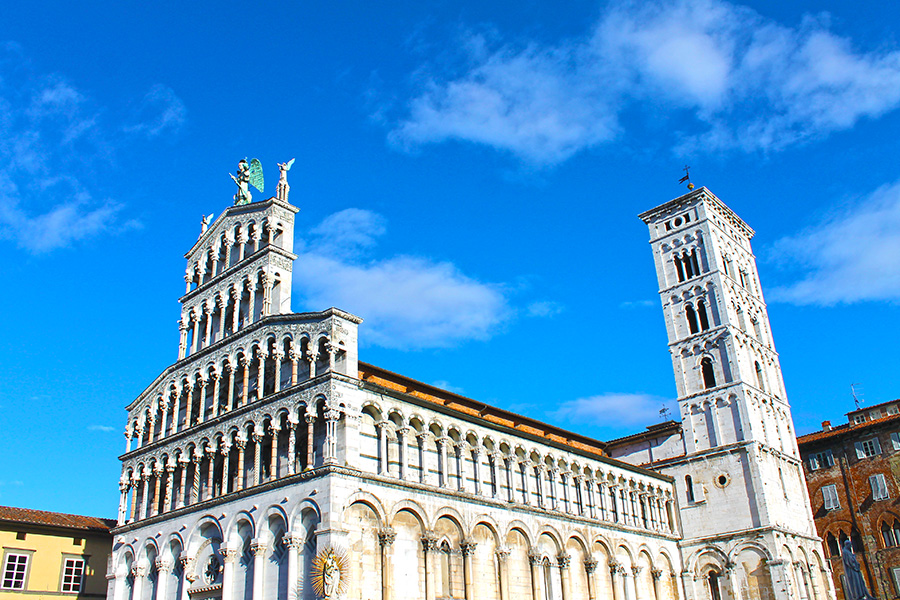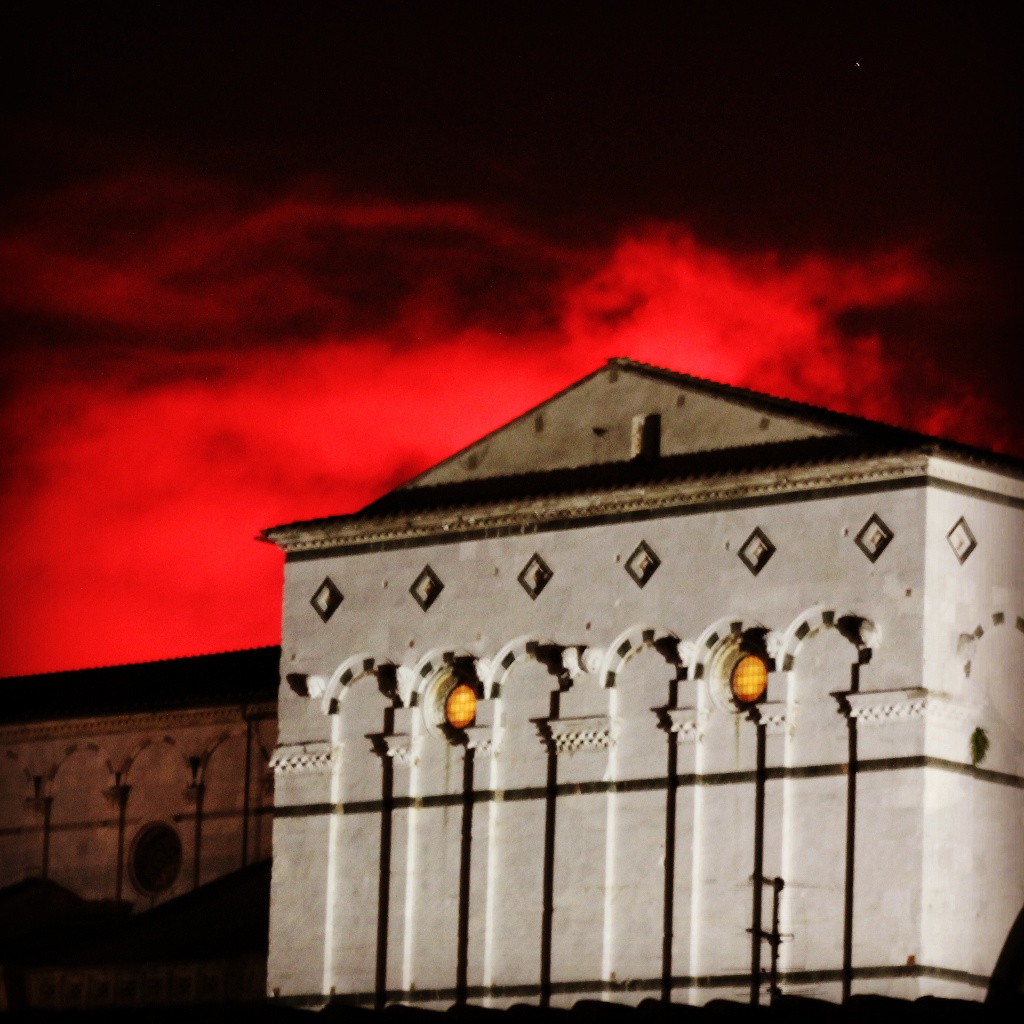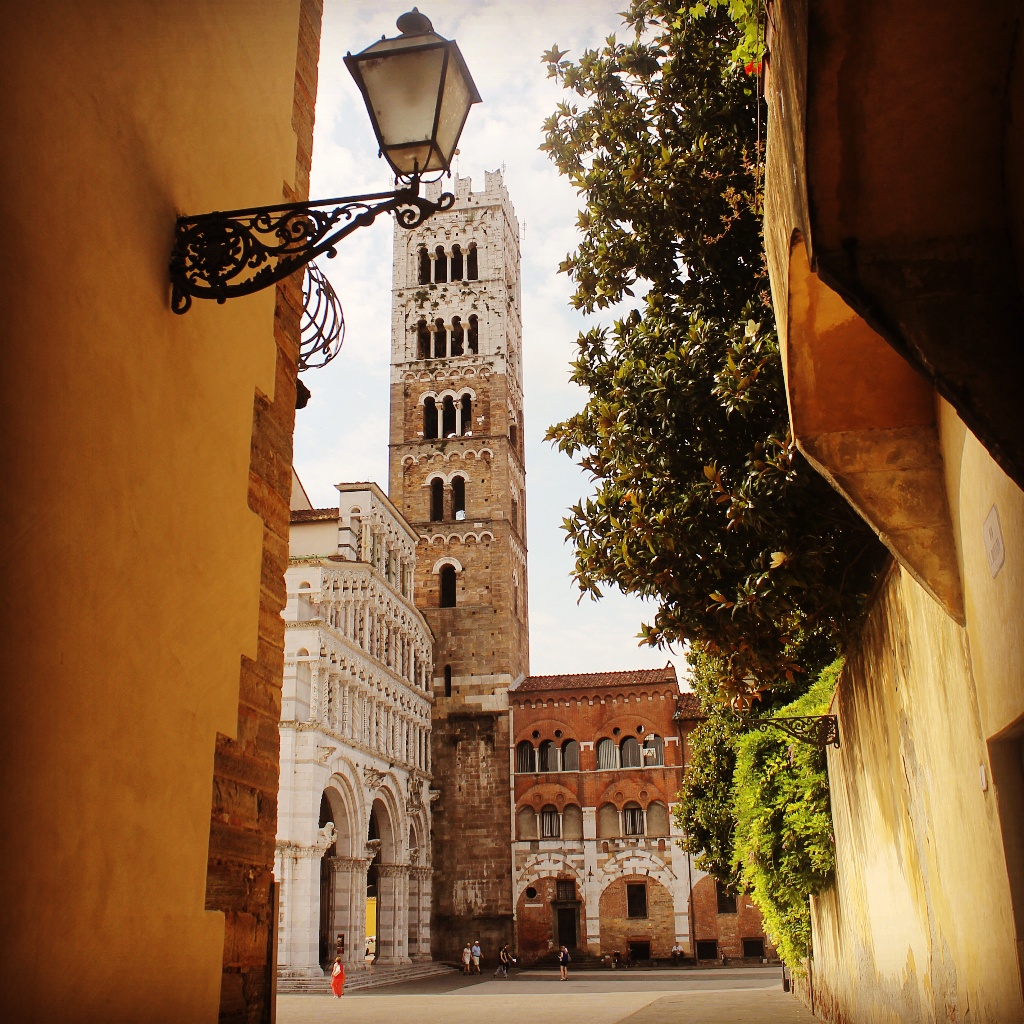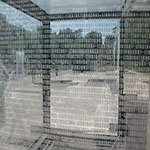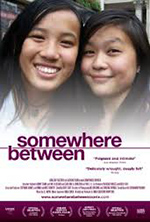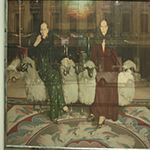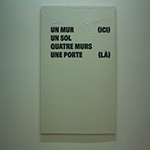Palazzo Bernardini
Conference Room: Giacomo Pucinni
Via Santa Croce 41
Lucca, Italy, 55100Conference program
- June 19, 2015
- 09:00 - 09:30Registration (Registration Desk)
- 09:30 - 10:30Welcome and Opening Remarks ~ Open Floor Workshop: Identities and Identifications
- 10:30 - 11:00Coffee Break
- 11:00 - 13:00Panel 1: Art and Identity Making: Self-Representation, Self–Projection and Life Practices
- 13:00 - 14:30Tuscan Specialties Lunch (Restaurant)
- 14:30 - 16:30Panel 2: Cultural Belonging, Collective Identities and Politics of Representation through Difference
- 16:30 - 17:00Coffee Break
- 17:00 - 19:00Panel 3: Identities and the Cities: Urban Transformations, Transition and Change in Urban Image Construction
- 19:00 - 19:45Welcome Drink & Snack– Aperitivo in Lucca
- 19:45 - 21:00Optional Social Dinner in Lucca
- June 20, 2015
- 08:00 - 09:00Documentary Film Viewing – Somewhere Between (A Film by Linda Goldstein Knowlton)
- 09:00 - 11:00Panel 4: History, Memory and Identity: Re-Invention of the Past through Artistic Narratives
- 11:00 - 11:30Coffee Break
- 11:30 - 13:30Panel 5: Performing Identities in Writing: Literature and Textual Strategies of Identity Making
- 13:30 - 15:00Tuscan Specialties Lunch (Restaurant)
- 15:00 - 17:00Panel 6: Identity and the Visual: The Role of Visual Representation in Shaping Identitarian Signifiers
- 17:00 - 17:30Coffee Break
- 17:30 - 19:00Panel 7: Society, Politics and Identity Making Practices
- 19:00 - 19:30Concluding Remarks and Discussions
- 19:30 - 21:00Optional Social Dinner in Lucca
- June 21, 2015
- 09:00 - 11:30Optional Guided Walking Tour of Lucca
- June 19, 2015
Identities and Identifications: Politicized Uses of Collective Identities (Third Edition)
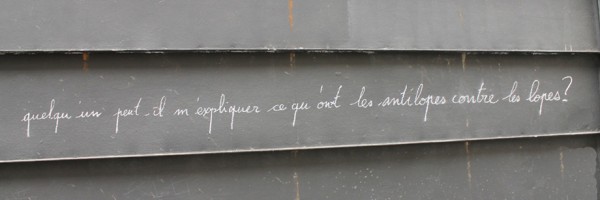
- Conference Description
- Participant’s Profile
- Registration and Fee
- Social Activities and Publication
- Important Dates
- Venue and Directions
- Conference Program
- Panel 1
- Panel 2
- Panel 3
- Documentary Film: Somewhere Between
- Panel 4
- Panel 5
- Panel 6
- Panel 7
The Third Euroacademia International Conference
Identities and Identifications
Politicized Uses of Collective Identities
19 – 20 June 2015
Palazzo Bernardini
Lucca, Tuscany, Italy
Conference Description
Identity is one of the crown jewelries in the kingdom of ‘contested concepts’. The idea of identity is conceived to provide some unity and recognition while it also exists by separation and differentiation. Few concepts were used as much as identity for contradictory purposes. From the fragile individual identities as self-solidifying frameworks to layered in-group identifications in families, orders, organizations, religions, ethnic groups, regions, nation-states, supra-national entities or any other social entities, the idea of identity always shows up in the core of debates and makes everything either too dangerously simple or too complicated. Constructivist and de-constructivist strategies have led to the same result: the eternal return of the topic. Some say we should drop the concept, some say we should keep it and refine it, some say we should look at it in a dynamic fashion while some say it’s the reason for resistance to change.
If identities are socially constructed and not genuine formations, they still hold some responsibility for inclusion/exclusion – self/other nexuses. Looking at identities in a research oriented manner provides explanatory tools for a wide variety of events and social dynamics. Identities reflect the complex nature of human societies and generate reasonable comprehension for processes that cannot be explained by tracing pure rational driven pursuit of interests. The feelings of attachment, belonging, recognition, the processes of values’ formation and norms integration, the logics of appropriateness generated in social organizations are all factors relying on a certain type of identity or identification. Multiple identifications overlap, interact, include or exclude, conflict or enhance cooperation. Identities create boundaries and borders; define the in-group and the out-group, the similar and the excluded, the friend and the threatening, the insider and the ‘other’.
Beyond their dynamic fuzzy nature that escapes exhaustive explanations, identities are effective instruments of politicization of social life. The construction of social forms of organization and of specific social practices together with their imaginary significations requires all the time an essentialist or non-essentialist legitimating act of belonging; a social glue that extracts its cohesive function from the identification of the in-group and the power of naming the other. Identities are political. Multicultural slogans populate extensively the twenty-first century yet the distance between the ideal and the real multiculturalism persists while the virtues of inclusion coexist with the adversity of exclusion. Dealing with the identities means to integrate contestation into contestation until potentially a n degree of contestation. Due to the confusion between identities and identifications some scholars demanded that the concept of identity shall be abandoned. Identitarian issues turned out to be efficient tools for politicization of a ‘constraining dissensus’ while universalizing terms included in the making of the identities usually tend or intend to obscure the localized origins of any identitarian project. Identities are often conceptually used as rather intentional concepts: they don’t say anything about their sphere but rather defining the sphere makes explicit the aim of their usage. It is not ‘identity of’ but ‘identity to’.
The Third Euroacademia International Conference ‘Identities and Identifications: Politicized Uses of Collective Identities’ aims to scrutinize the state of the art in collective identities research, to bring once more into debate the processes of identity making, identity building in both constructivist or de-constructivist dimensions. It is the aim of the Euroacademia conference to open the floor for dynamic multi-dimensional and inter-disciplinary understandings of identities in their historic formation or in the way they shape the present and future of organizations or communities.
Euroacademia aims to bring together a wide network of academics, researchers, practitioners and activists that are willing to share and open to debate their research on identity related topics. Disciplinary, trans and inter-disciplinary approaches, methodological assessments and recommendations, single case studies or cross-sectional analyses, reflective essays, experience sharing or works addressing new puzzles are all welcomed.
Participant’s Profile
The conference is addressed to academics, researchers and professionals with a particular interest related to the topic of collective identities from all parts of the world. Senior and junior researchers are equally welcomed. As the nature of the conference is intended to be multidisciplinary in nature, different academic backgrounds are welcomed.
Post-graduate students, doctoral candidates and young researchers are welcomed to submit an abstract. Representatives of INGOs, NGOs, Think Tanks and activists willing to present their work or projects with impact on or influenced by specific understandings of identities are welcomed as well to submit abstracts of their contributions.
Abstracts will be reviewed and the participants are selected based on the proven quality of the abstract. The submitted paper for the conference proceedings is expected to be in accordance with the lines provided in the submitted abstract.
Registration and Fee
The Registration Process is Closed
The Participation Fee Includes:
- the registration fee
- participant’s package with all the materials for the conference
- eligibility for publishing of the presentation in the conference volume
- a copy of the electronic volume
- access to Euroacademia discussion group and newsletters
- 2 daily coffee brakes with typical Italian snacks and refreshing drinks during the conference (water/sodas)
- sparkling wine welcome drink and ‘aperitivo’ Tuscan Style on 19th of June 2015
- a 4 course Tuscan specialties lunch on 19th of June 2015
- a 4 course typical Lucca local food lunch on 20th of June 2015
- an optional guided walking tour of Lucca on 21st of June 2015 in the morning with the possibility to visit also the Piazza dei Miracoli with the Leaning Tower in Pisa in the afternoon
- certificate of attendance
- access to optional social program
Unfortunately, Euroacademia has no available funds for covering transport and accommodation to/in Lucca. Participants are responsible for securing funding to cover transportation and accommodation costs during the whole period of the conference. Official invitation letters can be sent by Euroacademia to the financing institution to confirm the selection and participation in the conference upon request.
Social Activities and Publication
A specific spot in the conference program will be dedicated to social networking and therefore all the participants interested in setting or developing further cooperation agendas and prospects with other participants will have time to present and/or promote their project and express calls for cooperation.
Photos and videos will be taken during the conference and the organizers will consider through the participation of selected presenters or members of the audience that the agreement for being photographed or filmed during the event was granted through registration to the event. Please notify the organizers in written form prior to the the event if you are a confirmed participant and would prefer otherwise.
A specific setting (Social Corner) for promotional materials connected with the topic of the conference will be reserved for the use of the participants. Books authored or edited by the participants can be exhibited and promoted during the whole period of the conference and can also be presented within the conference package based on prior arrangements.
An optional dinner and as social event will be organized for the second evening of the conference in a typical Tuscan cuisine restaurant as optional program for the willing participants. The social dinner will be held based on participant’s prior confirmation and it costs around 20 Euro to be covered by the participants individually.
An optional walking tour of Lucca will be available to willing participants on Sunday 21st of June 2015 in the morning with the possibility to visit the Piazza dei Miracoli with the Leaning Tower in Pisa in the afternoon.
Publication:
Selected papers will be published in an electronic volume with ISBN after the confirmation of the authors and a double peer-review process based on an agreed publication schedule. All the papers selected for publication should be original and must have not been priory published elsewhere. All participants to the conference will receive a copy of the volume.
| Important Dates | |
|---|---|
| 1st of May 2015 | Deadline for Submitting Panel Proposals |
| 15 May 2015 | Deadline for Paper Proposals: 300 words abstracts and details of affiliation |
| 16th of May 2015 | Latest notification of acceptance |
| 18th of May 2015 | Sending the Registration Form |
| 22 May 2015 | Payment of the conference fee |
| 5th of June 2015 | Sending the draft paper to be uploaded on the web site of the conference |
| 10th of June 2015 | Publication of the conference program and uploading the draft papers on the website |
| 19th of June 2015 | The conference commences at 9.00 am |
Venue and Directions
The conference will take place in the XVIth century Palazzo Bernardini, centrally located in the heart of Lucca, few steps away from the Piazza San Michele with its beautiful San Michele in Foro church and the renaissance walls that surround the historical city, making easily accessible within a walking distance any part of its amazing Middle Ages or Renaissance treasures. Via Santa Croce, 41 Lucca is one of the most beautiful cities of Tuscany, a treasure of beauty, culture and history, preserving exquisitely the signs of past kingdoms and dominions, the beauty of nature and the works of many renown architects and artists. Dante spent a part of his exile in Lucca. Located between Florence and Pisa, Lucca is the home town of Giacomo Puccini and Luigi Boccherini. Is a town where each of the streets has a story to tell. The city walls are the best preserved Renaissance walls in the world, offering the opportunity of a relaxing and enchanting ‘passeggiata’ (promenade) or a bike ride with amazing views over the surroundings. Piazza Napoleone -one of the main squares – was built in the time of Napoleonic conquest when the city was led by Napoleon’s sister Elisa Bonaparte. It is rivaled in beauty by Piazza del Amfiteatro, built to maintain the shape of the Roman Amphitheater built during the I and II centuries that could accommodate over 10,000 spectators. A city of 100 churches, Lucca is labyrinth of small streets that hide secrets to be discovered.
Palazzo Bernardini
55100 Lucca
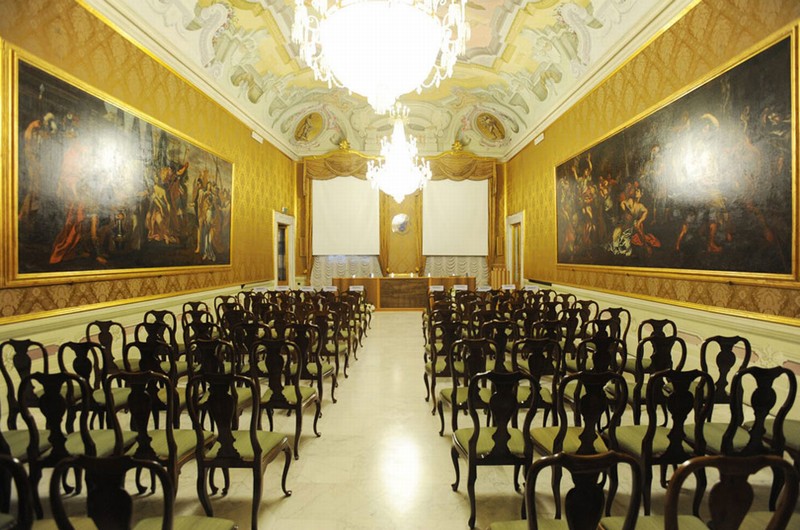
Lucca is very easy to reach both by bus as well as train from both Pisa and Florence, making it perfect for anyone getting around solely on public transportation. The train station is right outside the southern walls, with an entrance below the balcony of San Colombano that brings you right behind Lucca’s cathedral and into the heart of the small walled town. When arranging your travel by plane, book a flight to Florence (Petrola) or Pisa (Galileo Galilei) airports. The easiest way to reach Lucca is from Pisa airport that requires a 25 minutes public bus or train travel right from the airport. From Florence the travel by bus or train takes about 50 minutes. Make sure that your flight arrives earlier during the day as after 22.00 buses or trains to Lucca are no longer available. Taxis are available in Pisa airport and will cost around 50 Euro until your destination in Lucca. If your flight arrives later in the night, book a room for the night in either Florence or Pisa, and start your travel to Lucca in the morning since buses and trains are available from 5.30.
See an interactive map:
HERE
Conference participants are responsible for arranging the accommodation and travel to Lucca.
Conference Program
The Conference Program is available below by clicking the corresponding tabs for each panel.
The Conference Agenda is available on the right sidebar of the page.
Art and Identity Making: Self-Representation, Self–Projection and Life Practices
Chair: Emanuel Crudu (Euroacademia, Paris and Brussels)
- Fake Identities: Nature, Representation, and Self-ProjectionBased on that hypothesis, and drawing from Aesthetics, Art History and Theory of Representation, this article wishes to attempt an archaeology of the work of art as an apparatus of identification, focusing on the specular links that articulate vision, knowledge, nature and identity in Western culture.Vangelis Athanassopoulos, University Paris 1 Panthéon-Sorbonne and CNRS, France
- The Illustrated Interview as Self-Portrait: Portraying British Women SculptorsThis paper considers the role of the illustrated interview as a representation of British women sculptors in the first half of the twentieth century. It addresses both language and photographic imagery as mechanisms through which these artists were positioned as women undertaking a supposedly “masculine” practice.Pauline Rose, The Arts University Bournemouth, UK
- Identity and Self-Fashioning of an Ottoman Ruler as Shown in Gentile Bellini’s Portrait of Sultan Mehmed II (1480)Although accepting Portrait of Sultan Mehmed II as an important cross-cultural artistic testimony, due to the complexity of the painting’s condition and conservation history, few scholars have further explored its significance as a political and cultural expression of self-representation by an Ottoman ruler. Therefore, this paper aims to examine the intercultural dialogue between the identities of the painter and the sitter. In addition, I will discuss not only how portraiture is used to create a cross-cultural identity, but also how courtly culture and the Renaissance itself had an impact on the staging of this multi-layered identity.Talitha M. G. Schepers, Christ’s College, University of Cambridge, UK
- Shilpa Gupta: Identity as Shared Day-to-Day Life PracticeGupta is making a statement regarding Indian and Pakistani's identity, referring to a common identity, prior to the Independence, based on the territory, and human presence on the land, trying to overcome a narrow definition of identity based on religion, which is the prevalent definition at present in Pakistan and is becoming more prevalent in India under the spell of the Hindu party. These trends that attempts to assert religion as an essential component of people identities is a passport for confrontation between the communities. Instead she is proposing that collective identities are based on practices of living, of growing food, and of dying, and related to ties with one's neighbors as carers of pasture, of land, of graves.Christine Vial Kayser, Histoire Culturelle et Sociale de l'Art, Paris 1 Panthéon-Sorbonne, France
Cultural Belonging, Collective Identities and Politics of Representation through Difference
Chair: Pauline Rose (The Arts University Bournemouth, UK)
- Henry Stanley’s ‘The East and The West’ (1865): Reflections on Civilization and Identity by Britain’s First Muslim PeerThis paper explores the reflections on ‘civilization’ and identity that developed in Westminster debates and through the press in the 1860s, with particular focus on an 1865 pamphlet entitled 'The East and the West: Our Dealings with Neighbours'. In some respects, they address themes strikingly reminiscent of challenges that continue to face multicultural societies today.Andrew Cobbing, University of Nottingham, UK
- ‘Superflat’ and the Reconsideration of the Western Heritage: For a New Definition of the Japanese IdentityThis study will show how Morimura Yasumasa uses the imagination from the Japanese aesthetic and exoticism to exhibit a certain Nippon imaginary. Quoting and sliding inside the narration of the famous masterpieces, Morimura’s substitutions and hybridizations reflect another historic alternative. In a search of recognition of Japanese path, cross-cultures and cross-genders are instruments to set up a dialogue addressing the Western influence.Déborah Lévy, University of Vincennes-Saint-Denis Paris 8, France/ University of Tokyo, Japan
- Teshigahara Hiroshi – Filmmaker of the Japanese Collapsing IdentityThis presentation will pay special attention to two of Teshigahara’s movies The Face of Another (1966) and The Man without a Map (1968) and bring out special patterns such as social mask and evaporation of man like illustrations of atomic and war legacy as well as crisis of modernity resulting from it.Maxime Boyer-Degoul, Université Libre de Bruxelles, Belgium
- Visual Objects in European-Bengali Identity Dynamics: From 18th Century Exchanges to Contemporary AfterlivesMy contribution investigates the history, appropriations and afterlives of visual objects involved in historical intercultural exchanges in 18th century Bengal. Visual objects appear in this history on multiple levels, both as gift-objects and as part of 'early visual anthropologies'. As gift-objects, specific visual materials such as Flemish prints or copies of European paintings circulated as gifts from European merchants to influential local power-brokers.Wim De Winter, Ghent University, Belgium
- Sullied Sublime: Art History and Identity in the Post Internet EraThis paper focuses on two migrant, European painters who influenced the perception of a cultural identity in the newly colonised Australia between 1850 and 1890: Swiss-born, Abram-Louis Buvelot (1814-1886) and Austrian, Eugene von Gerard (1811-1901). Both have been posthumously honoured as fathers of the Australian landscape and, conversely, criticised for their misrepresentation of Australian history.Saffron Newey, Royal Melbourne Institute of Technology (RMIT University), Melbourne, Australia
Identities and the Cities: Urban Transformations, Transition and Change in Urban Image Construction
Chair: Gerhard Eichweber (Value Group, Switzerland)
- Taxonomy of Engagements in Furnishing the CityMost cities identify with the compendium of everyday neighborhood narratives and urban dialogues that can be associated with furnishings in parks, squares and streets. In that same fabric of the built environment are landscape furniture and outdoor artifacts such as lighting and pedestrian objects, significantly shaping the public space into a functional and idyllic community. Each of the major city squares or neighborhood spaces reveal various aesthetic elements and purposeful forms.Thelma Lazo-Flores, Chatham University, Interior Architecture and Landscape Architecture Programs Pittsburgh, Pennsylvania, United States
- Performing the Transitory Space: Landscape Gardens and the Enactment of IdentityIt was a shared cultural knowledge of only a part of the society and the bodily enactment of the shared norms was without a doubt a sign of social identity, and was also strengthening and materializing that identity. The objective of my paper is to show how landscape gardens were not only perceived, but bodily performed and how this somatic enactment was a crucial building block of identity. To do so, I am going to analyse two gardens created in the first half of the 18th century (Stowe and Rousham) and the literature about visiting them.Katarzyna Kaczmarczyk, University of Warsaw, Poland
- Ordinary Cities and EXTRAordinary Immigrants: Liquid Identities in the Urban SettingsThe Kaiserslautern’s case study, investigated by means of ethnography and biographical methods, illustrates the embedding processes of various immigrant groups. Among others the most essential for the local identity quest are asylum seekers, ethnic German or Jewish re-settlers from the former Soviet Union, military-related US-citizens, and high-qualified professionals at university or in the IT branch.These different immigrant groups with their liquid identities influence the local society and its structures in their peculiar ways, transforming Kaiserslautern as an ordinary city by EXTRAordinary immigrants.Tetiana Havlin, University of Siegen, Germany
- Collective Anamnesis and Individual Identity: A Critical Reflection on Debord’s Theory to Interpret the Artistic Transformation of Symbolic Urban SpacesThe contemporary phenomena of informal uses of urban spaces, temporary architectural interventions - and even occupation- for artistic and creative purposes demonstrate that the affirmation of collective values can only take place through the appropriation of specific urban spaces. Following Debord, in this process, the individual identity is affirmed accordingly. Through a critical overview of selected case studies in Europe, this study demonstrates the evidence of the linkage between the creative actions, as a form of expression of the collective identity, and the spatial features of the places where they may happen.Nadia Bertolino, Sheffield School of Architecture, University of Sheffield, UK
Documentary Film: Somewhere Between
A Film by Linda Goldstein Knowlton
- Somewhere BetweenWhen China passed its One Child Policy to limit population growth, an unexpected surge of abandoned baby girls started flowing into its orphanages. Since 1991, over 80,000 of those girls have been adopted by American families. While many adoption-focused documentaries give voice to adoptive parents, Somewhere Between explores the emotional and cultural impact of adoption from the point of view of four teenage girls, all adopted from China. This award winning film shares their personal journeys as these adoptees convey the experiences of a generation of young people attempting to reconcile their multiple identities while navigating the already perilous waters of American adolescence. A recent adoptive parent of her own Chinese baby, filmmaker Linda Goldstein Knowlton opens the film expressing her concerns for her daughter. How will she build a strong sense of identity as she grows older? Will she feel like an 'outsider' living in a family with two Caucasian parents? How will she supplement the missing pieces of her early life? Goldstein Knowlton seeks these answers by chronicling the experiences over two years of Haley, Jenna, Ann, and Fang, all struggling to find their place in the world. Each girl approaches her Chinese heritage differently, connecting with her birth culture in varying degrees. And each grapple in different ways with the the discrimination and racism they face, as their identity challenges typical ideas about race and culture for themselves and their communities. Shedding stereotypes and a one-size-fits-all identity, Somewhere Between poignantly conveys the vulnerability, confusion, and courage of these girls as they wonder, 'Who am I?' As Somewhere Between plunges the viewer into their ordinary and sometimes extraordinary experiences, we too, are encouraged to pause and consider who we are - both as individuals and as a nation of immigrants and people from diverse backgrounds.Linda Goldstein Knowlton, Director of 'Somewhere Between'
History, Memory and Identity: Re-Invention of the Past through Artistic Narratives
Chair: Emanuel Crudu (Euroacademia, Paris & Brussels)
- Who Can Erase the Traces?Galindo tends to promote dissidence in the public sphere through the mechanism of disillusionment and disenchantment.She is intent on understanding reality as historical and conflictive rather than natural or harmonious. Indeed, through her activist performances, and by using her body, the artist recalls notions of national identity and the formation of a social imaginary.Fortunata Calabro, Independent Researcher, London, UK
- Modernity and Identity in São Paulo During the 1950’s: Three Murals from Cândido PortinariThis presentation aims to introduce, through the study of three murals from the Brazilian artist Cândido Portinari, hypothesis on how some regional topics - linked to the memory and identity of São Paulo and the Latin America - were related to the modern architecture and the debates observed in Europe.Patrícia Martins Santos Freitas, Unicamp – State University of Campinas, Sao Paolo, Brazil
- Mugham, Meykhana, Jazz: Musical Performances, Traditionalism and National Identity in Contemporary AzerbaijanThe study explores why mugham, meykhana, and jazz have come to represent Azerbaijan, how they have been approached and produced, and why memory and tradition, in these particular forms, have taken on particular significance in different historical periods: the beginning of the past century, the Soviet times, and nowadays. Above all it the research points to music "traditions" in Azerbaijan as being an artificial cultural construct, which is periodically reinvented. It also demonstrates how "folk revival" has played a key role in strengthening Azerbaijani national consciousness in the post-Soviet period.Aneta Strzemżalska, European University at Saint Petersburg, Russia
- Seven Wonders of the World: How to Remember Destroyed ArtworksThis contribution tries to develop an interesting theme: the memory of an imagined artwork. The case in question, the seven wonders of the world, is the most famous because it explains how ancient (and destroyed) artworks have become an archetype that lives from antiquity to contemporary age. The reason of this success is present in the same definition of Wonder: Aristotle’s philosophy introduces this word, identified as a primordial feeling that is at the beginning of knowledge.Francesco Del Sole, Department of Cultural Heritage and Arts, University of Salento, Lecce, Italy
Performing Identities in Writing: Literature and Textual Strategies of Identity Making
Chair: Emanuel Crudu (Euroacademia, Paris & Brussels)
- Conservative Identity Politics Identity and Transformation in Ernst Jünger’s Postwar WritingsThe catastrophe of the First World War shattered numerous European national identities and led to various compensatory narratives that aimed to restore a sense of unity and belonging, forging the fiction of nationhood. Within the German context, probably few other figures reflect the cultural impact of this search for identity more diversely than philosopher and writer Ernst Jünger, particularly in regards to narrating nationhood. In his poetic and essayistic output, he probed several roles in order to model new forms of national identity and elitist belonging.André Fischer, Department of German Studies, Stanford University
- Kafka on Trial: Cultural Appropriation and the Politicisation of LiteratureA century after Franz Kafka wrote his famous short story The Judgment, a judgment befell his own literary corpus: The legal dispute over the unpublished writings of the Prague author and his executor Max Brod ended with a 2012 ruling by a Tel Aviv court, awarding their ownership to the National Library of Israel, in support of its claim that Kafka’s writings are a cultural asset which belongs to the Jewish people, and as such, to the Jewish state. The highly politicized use of Kafka’s Jewishness and Israel’s appropriation of his works is problematic. This paper contextualizes Kafka's literature as one that challenges traditional notions of identity formation. A reading of Kafka necessitates reaching beyond the limits of national, ethnic and religious borders. This quality affords him global recognition.Lara Pehar, University of Toronto, Canada
- Trading Rationality for Tomatoes: The Consolidation of Anglo-American National Identities in Popular Literary Representations of Italian CultureIn his influential study The Rhetoric of Empire (1993), David Spurr analyzes journalistic discourse on the Third World and isolates a nucleus of important rhetorical figures around which representations of the colonial and post-colonial other are articulated. In this paper, I borrow these rhetorical figures and I adapt them to the context of contemporary Anglo-American representations of Italian culture in popular literature. This highly romanticized factor is often the reason why Italy is sought after as an ideal place of contemplation, regeneration, tranquility, and authenticity. However, through the depiction of Italy as a pre-modern other, Anglo-American authors manage to consolidate their national identities as thoroughly modern, rational, dynamic, and forward-looking.Francesca Pierini Major, Institute of European and American Studies, Academia Sinica, Taipei, Taiwan
- An Emerging European Literary FieldThe common market and the EU´s cultural policies and their possible effects on the flows of literary exchange within the European space and the Europeanization in terms of sales and teaching of literature are relevant subjects of research in the process of establishing the concrete extent to which one could start speaking of a European literary field.Lia Durán Mogollón, University of Siegen, Germany
Identity and the Visual: The Role of Visual Representation in Shaping Identitarian Signifiers
Chair: Daniela Lenčéš Chalániová (Anglo-American University, Prague, Czech Republic)
- The Role of the Visual Arts in the Construction of Collective Identity: Hofmannsthal, Dürer and Van GoghIn Letters of a Man Who Returned Hofmannsthal shows that our conceptions of individual and collective identity are grounded in and shaped by artistic representations of the place and the culture to which we feel we belong. The aim of my paper is to unpack Hofmannsthal’s critique of an essentialist understanding of identity through a close reading of this text.Hang-Sun Kim, Visiting Assistant Professor with the German Department at the University of Toronto
- From Stigma to Medal of Honor? Auschwitz Tattoos as Embodied MemoriesWhile Holocaust survivors in the decades after the war met with ignorance about the meaning of their tattooed number or even suspicion about how they had managed to survive,the picture of a young person with a hip tattoo might not immediately evoke associations with the Holocaust. Can the past really be tattooed on the present? The tattoos can be understood as an expression of generational trauma-transfer, or as aide-mémoires,tools to build one owns identity by recalling family or national history.Tanja Schult, Department of Culture and Aesthetics, Stockholm University
- The Psychostasis AngelWeighing as a metaphor of divine judgment has been used by Christian writers as early as the fourth-century, and the Weighing of Souls or Psychostasis turned Archangel Michael into a central figure of Last Judgment compositions. The task of weighing good and bad deeds to determine the soul’s otherworldly fate upon death is not associated with the archangel by textual tradition, however, and there is no consensus about the reasons for the choice of the archangel for this role in art. Neither the Scriptures nor apocryphal writings give convincing reasons for associating the Weighing of Souls with angels. The presentation offers an insight into the dynamics of text and image by juxtaposing art historical theories with angelological texts in search of the mysterious Psychostasis angel.Edina Eszenyi, University of Kent, School of History / Lecturer in Art History, Rome Art Program
- Visualising Securitisation and De-Securitisation of Migration in the Mediterranean: A Critical Iconologyof Migrant Images in the Media and on the Social NetworksIn my contribution, I want to trace the recent visual discourse surrounding (im)migration across the mainstream online media and across selected social networks to show, on the one hand, the continued social construction of a migrant as the Other/Threat/Plague, as Francesca Falk brilliantly shows in her book chapter explaining that the European stock photo agencies by depicting the European rescuers in hazmat suits and masks create a social reality in which the “territorial borders are superimposed on the boundaries of the body; migration appears at the same time as an assault upon the integrity of one’s own and Europe’s body” (Falk 2010: 183).Daniela Lenčéš Chalániová, School of International Relations and Diplomacy, Anglo-American University, Prague
Society, Politics and Identity Making Practices
Chair: Emanuel Crudu (Euroacademia, Paris & Brussels)
- A Document of No Good: The Modern Passport System and the Administration of the Undesired in Europe between the World WarsBased on primary sources and new findings concerning the political use of travel documents for excluding undesired populations the paper examine the story of modern passports system in Europe between the wars. It will explore its far reaching impacts of state issued documentation on the restriction of the freedom of movement in Europe between wars as well as its implicit influence on setting the stage for migration management after 1945.Yaron Jean, University of Haifa, Israel
- Investigating Okun Misery Index for Democratic States with Application in AlbaniaOkun misery index is a fundamental poverty assessment parameter. The objective of the present study is to develop a statistical analysis for Okun misery index in each democratic state during a specified period. The countries with the lowest misery index are: Switzerland 3.50, Japan 4.80, Norway 4.90, Mexico 8.37 and Australia 8.80. The countries with the highest misery index are: Greece 29.23, South Africa 28.90, Spain 24, etc. This method applied in Republic of Albania over the period January 2005 –December 2014.Setki Mulla, Albanian University Tirana, AlbaniaFejzi Kolaneci, University of New York in Tirana, Albania
- Identity, Diversity, Set Theory: The Design of Concepts and Solutions for a better FutureThe paper relates to previous papers about economy, crisis, entrepreneurship versus both socialism and capitalism, employment and the ability of appropriate remuneration, as related to the "culture" of dealing with qualitative diversity and its distinction as well as realisation, and what this means regarding concepts such as education, democracy etc. Having defined as the most important of all equal rights for individuals as well as groups, societies, states and continents, the "equal right of being different", thus, as the right of being, this paper adds another way of explanation as yet another piece to the puzzle of understanding the importance and priority of qualitative diversity and distinction over all, but above all over all merely quantitative aspects and criteria.Gerhard Eichweber, Silva Plan / Value Group, Switzerland











